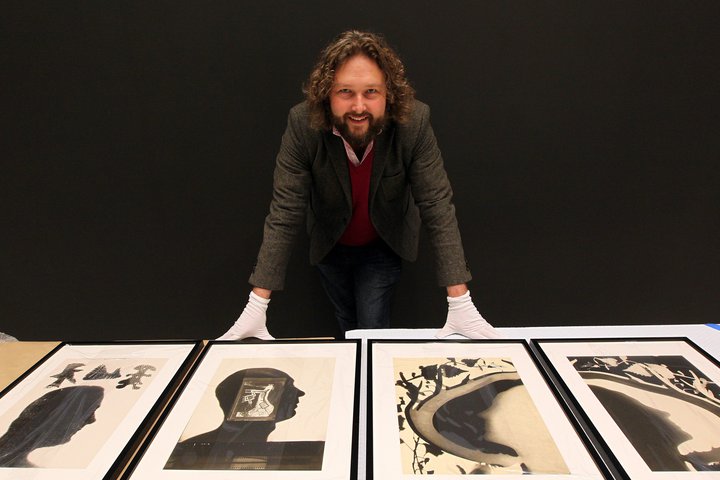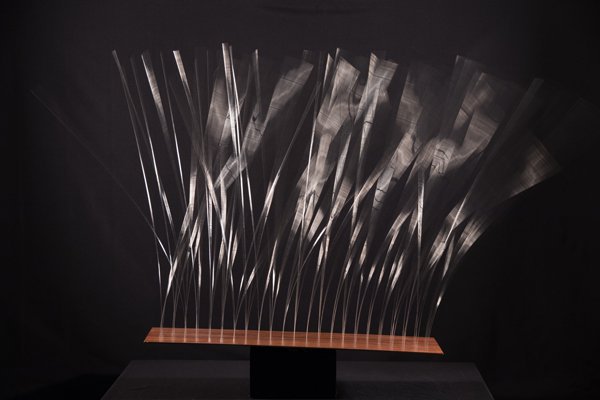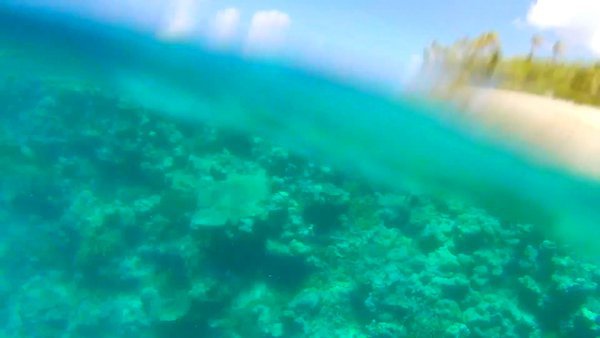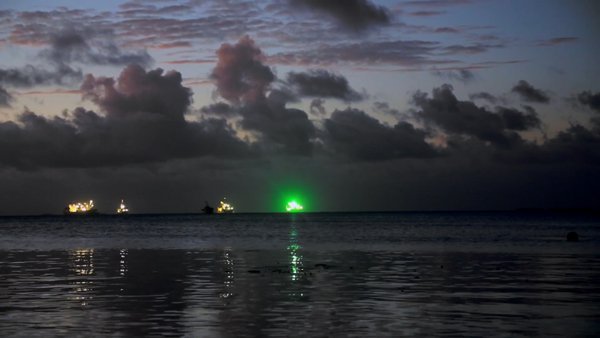Paul Brobbel • 27 June 2018
We asked Govett-Brewster senior curator and Len Lye expert Paul Brobbel to choose three Gallery art works making an impression on him at the moment.

The Govett-Brewster Art Gallery in New Plymouth is open 10am -5pm seven days. Entry is free.
Yuko Mohri
Moré Moré Variations (detail) 2017
Photo by Ayumi Matsuura.
Courtesy the artist

One of the great things about making exhibitions at the Govett-Brewster Art Gallery is the opportunity to work with contemporary artists using the work of Len Lye as a springboard. It’s easy to appreciate the sensual side of Lye's work and sound is one of the crucial elements we get to explore. Sensory Agents is an exhibition (4 August - 4 November 2018) curated by my colleague Sarah Wall which takes the musical elements in Lye’s work as a framework to consider contemporary artists working with sound, led by three international artists – Yuko Mohri (JP), Sergei Tcherepnin (US) and Danae Valenza (AU).
Watching this show develop over the last year, I’ve been struck by the work of Mohri, a new iteration of Moré Moré which will be installed in the massive lower ramp space in the Len Lye Centre. Inspired by the improvised solutions to leaks in the Tokyo metro system, Mohri will assemble a network of everyday objects (plastic bottles, umbrellas, kitchen whisks), all expired in use but repurposed to support a flow of water. I imagine this network of elements, circulating liquids and rhythms will suggest a system that blurs the line between natural and artificial. I wonder what the audience will discover. Something that echoes Lye’s interest in the human body? Something mechanical? Something musical? Something clever? I hope they sense a work with a pulse.
-"Inspired by the improvised solutions to leaks in the Tokyo metro system, Mohri will assemble a network of everyday objects ... all expired in use but re-purposed to support a flow of water"
Len Lye
Grass, 1965
Photo by Bryan James. Courtesy of the Albright-Knox Art Gallery and Len Lye Foundation.

I often get asked to name my favourite work by Len Lye and since his career ranged across film, sculpture and painting (among many other media) the answer often changes. A work that I’m always taken by is Grass, one of the works Lye developed shortly after his switch from experimental cinema to sculpture in 1958. Lye unveiled Grass along with a dozen other pieces in An Evening of Tangible Motion Sculpture at New York’s Museum of Modern Art on 5 April 1961. The gently swaying board of steel wire demonstrated a more delicate end of Lye’s kinetic sculpture, something very different to the cacophonous thrill many know in works like Blade or Trilogy (A Flip and Two Twisters).
For me Grass represents an intimacy that is often overlooked in this artist’s world. One of the highlights of my time at the Govett-Brewster was watching Grass perform with a live jazz accompaniment. It’s a little known detail that Lye sometimes suggested music accompany certain works. For Grass Lye recommended slow pieces by Erik Satie or Miles Davis’s 1957 recording of My Funny Valentine.
-"It’s a little known detail that Lye sometimes suggested music accompany certain works. For Grass Lye recommended slow pieces by Erika Satie or Miles Davis’s 1957 recording of My Funny Valentine"
There are two versions of Grass, a larger version familiar to visitors to New Plymouth, and a smaller version in the collection of the Albright-Knox Art Gallery in Buffalo, US. Both featured in An Evening of Tangible Motion Sculpture. Another highlight for me here has been managing the restoration of the Albright-Knox Grass and watching it leave New Zealand this month for exhibition in Buffalo in the exhibition Giant Steps: Artists and the 1960s (30 June 2018 - 6 January 2019). Meanwhile, Grass is back on display in New Plymouth in the Sensory Agents exhibition.
G. Anthony Svatek,
.tv, 2017
Courtesy of the artist.

Cinema is a big deal in our programming at the Govett-Brewster. Few museums have the foot in the cinematic world that we enjoy with Len Lye’s international fame as an experimental filmmaker. One of the best parts of this is working with our biennial International Film Curator in Residence. In 2017 Erika Balsom (King’s College London) held this residency and this year we’re completing Erika’s project with the publication of a new book An Oceanic Feeling: Cinema and the Sea and an accompanying film programme as part of our Projection Series #11 (4 August - 18 November 2018). I’m expecting the book to be something special in terms of international film scholarship but the most exciting part of this project is the series of films curated by Erika for screening in New Plymouth (with a few smaller offsite screenings for Auckland and Whakatane), centring New Zealand in Erika’s work in thinking around the social history of the seas through film.
-"Cinema is a big deal in our programming at the Govett-Brewster. Few museums have the foot in the cinematic world that we enjoy with Len Lye’s international fame as an experimental filmmaker"
Eleven films screen in this programme including works by Maddie Leach (NZ), Alan Sekula (US), Peggy Ahwesh, the CAMP collective (IN) and Mati Diop (FR). One work I think will particularly resonate is the quasi-sci-fi .tv by G. Antony Svatek. Few of us would be aware that the nation of Tuvalu survives on revenue from licensing its country-code web extension to global media corporations; however, we probably all know the plight that countries like Tuvalu face from global warming. In Svatek’s film, an anonymous voice from the future tracks the ‘virtualisation’ of Tuvalu as international information and entertainment networks exploit an intangible property of the island while rising waters take its physical existence.

Paul Brobbel is Senior Curator and Len Lye Curator at the Govett-Brewster Art Gallery.


